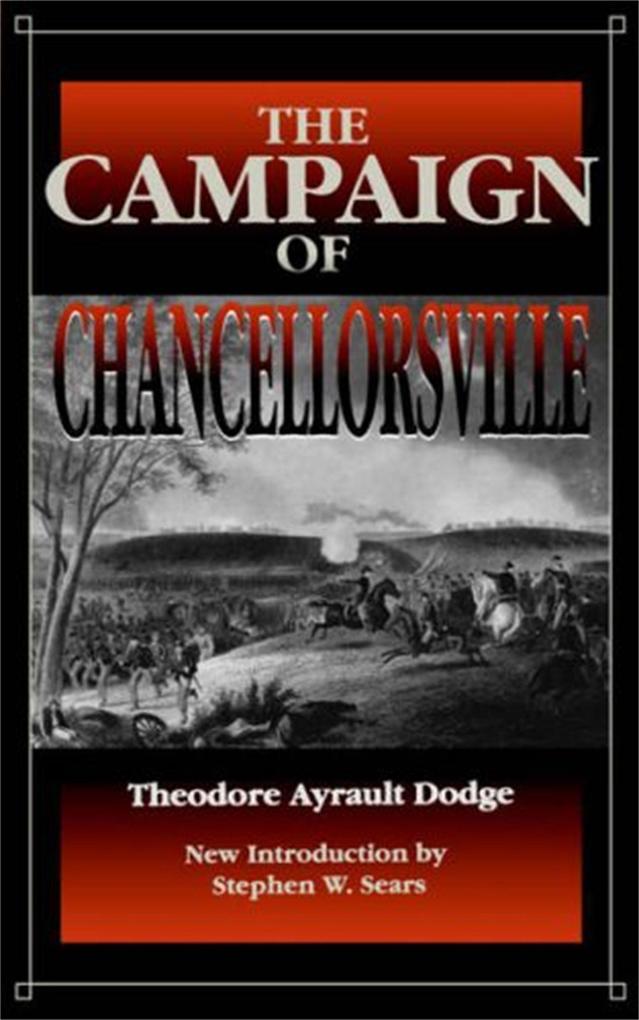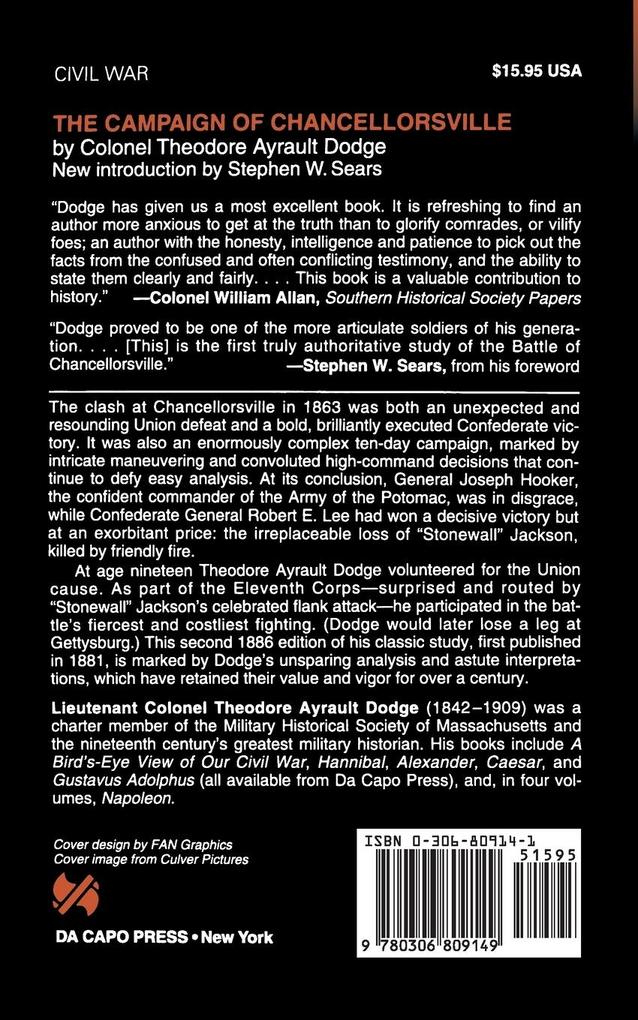The clash at Chancellorsville in 1863 was both an unexpected and resounding Union defeat and a bold, brilliantly executed Confederate victory. It was also an enormously complex ten-day campaign, marked by intricate maneuvering and convoluted high-command decisions that continue to defy easy analysis. At its conclusion, General Joseph Hooker, the confident commander of the Army of the Potomac, was in disgrace, while Confederate General Robert E. Lee had won a decisive victory but at an exorbitant price: the irreplaceable loss of "Stonewall" Jackson, killed by friendly fire.At age nineteen Theodore Ayrault Dodge volunteered for the Union cause. As part of the Eleventh Corps -- surprised and routed by "Stonewall" Jackson's celebrated flank attack -- he participated in the battle's fiercest and costliest fighting. (Dodge would later lose a leg at Gettysburg.) This second 1886 edition of his classic study, first published in 1881, is marked by Dodge's unsparing analysis and astute interpretations, which have retained their value and vigor for over a century.
Inhaltsverzeichnis
* Introduction * Condition of the Combatants * Hooker and the Army of the Potomac * The Army of Northern Virginia * Difficulty of an Attack * The Proposed Cavalry Raid * The Feint by the Left Wing * The Real Move by the Right Wing * Lees Information and Movements * Hookers Advance Friday * Position at Chancellorsville * Jacksons March and Sickless Advance * Hookers Theories and Chances * Position of the Eleventh Corps * Situation at Six OClock * Jacksons Attack * Conduct of the Eleventh Corps * Hookers Parry * The Midnight Attack * Stonewall Jackson * Position at Fairview * The Left Centre * The New Lines * Sundays Miscarriage * Sedgwicks Change of Orders * Sedgwicks Assault * Sedgwick Marches Toward Hooker * Salem Church * Sedgwick in Difficulty * Sedgwick Withdraws * Hookers Criticisms * Hookers Further Plans * The Army of the Potomac Re-Crosses * Operations of the Cavalry Corps * Hookers Rsum * Some Resulting Correspondence













